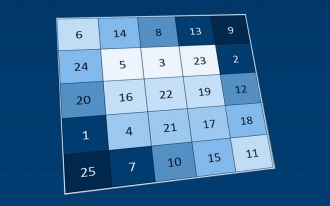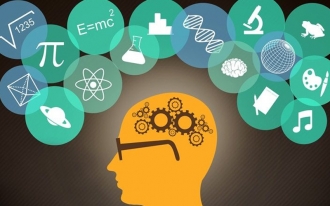- BRAINTRAIN |
- Blog |
- Memory |
- Mnemonics in the Process of Effective Memory Development

Bogdan Moroz 19.10.2019 2862 Comments
Comprehensive memory development doesn’t solely involve monotonous repetition of material to train the process and reduce the time needed for memorization. In reality, it’s a multifaceted process that includes not only regular training but also the use of effective psychological techniques, some of which were discovered and documented in ancient Greece and during the Roman Empire.
What Is Mnemonics?
At its core, mnemonics is a set of proven, effective tools operating on a psychological level, enabling individuals to memorize and recall significantly more information than the average person in the same amount of time. Most techniques focus on optimizing the information encoding process, making it compact, structured, and convenient for storage. This approach expands the amount of initial information that can fit into a person’s working memory. Additionally, data structured in a specific way is easily decoded and recalled when needed.
With the necessary mnemonic techniques and experience in their application, an individual significantly enhances their ability to memorize data, concentrate, analyze, and store information long-term when required. Like intensive memory training, mnemonic techniques engage various brain areas, stimulating more active cognitive activity and, ultimately, greater efficiency.
In summary, mnemonics is not a specialized memory training or a structured course of actions but a collection of effective, practical tools that one must learn to use thoughtfully and appropriately. Not all techniques suit everyone equally; depending on thinking styles and development, individuals select techniques for their personal toolkit. The same applies to the images used for encoding data: some prefer realistic images, while others benefit from abstract ones not drawn from the real world. This is discovered through individual practice with trainers or specific tasks.
Who Uses Mnemonic Techniques?
Primarily, those engaged in education and self-development explore memory development and optimized memorization processes, as these techniques are highly effective for learning new skills. However, the potential of these tools extends far beyond, benefiting anyone. Mastering such skills allows effortless memorization of phone numbers, long shopping lists, or preparing a coherent, high-quality presentation speech without notes. This enhances everyday capabilities and elevates productivity to a new level.
Four Principles of Working with Images
The discussion of images is deliberate, as they are the primary medium in mnemonics. Information is encoded in this form, stored in long-term memory, and can be retrieved and used as needed after decoding. As mentioned, individuals respond to specific types of imagery, but four fundamental rules, based on psychologists’ observations, significantly influence memorization effectiveness.
Volume
This refers to the three-dimensionality of the imagined object—not a flat image but a realistic item or living being. In your imagination, you can rotate such an image, view it from all angles, and give it movement. These objects are far more effective and better retained in memory. Even for flat objects, like a sheet of paper, psychologists recommend imagining it from an angle or with bends to sense its volume.
Full Color
According to research psychologists, many people imagine objects in black-and-white, which is normal. However, for a more realistic image, it’s essential to have a clear sense of the object’s color and texture. Instead of basic colors, specify the shade and saturation precisely. Why? So the brain deems this information important and memorizes it better.
Detail
Like color, small details are crucial for the method’s effectiveness. The object must not have undefined characteristics or “gaps” in information. Verbal information is easily forgotten, whereas a realistic image can be retained for a lifetime.
Size
This parameter works oppositely. Maintaining real size ratios is unnecessary, as it may cause some elements to be overlooked. Imagined objects should be roughly the same size, even if their real-world sizes differ vastly. It’s considered convenient to work with objects that easily fit in your hand.
Mnemonic Tools for Memory and Concentration Development
Regardless of which methods suit you best, it’s valuable to have the full arsenal of techniques, many of which have been effective for millennia. These are basic techniques, from which experienced practitioners can create unique, highly effective constructs. Once you master the basics, feel free to experiment with combinations and modifications.
Effective Number Memorization
This skill is invaluable, as it streamlines tasks like paying for purchases or filling out forms from memory without checking documents. Some find this skill easier, while others can use mnemonic tricks, such as a special image-based language. To practice and automate this skill, a number sequence memorization trainer is convenient, offering quick, practical training without paperwork.
The mnemonic tool involves assigning each number a specific image. In the most common system, there are 10 images (0 to 9), though some use tables up to 100 or 1,000. Each number is linked to an image you find most similar, emphasizing individuality—your invented images are better retained than those suggested by others. Memorizing a sequence of unrelated numbers involves creating a story where the relevant images (representing specific numbers) appear sequentially. For example: 0 – circle, 1 – soldier, 2 – flamingo. To memorize the emergency number 102, you might imagine a story like: a soldier stood surrounded by flamingos. This method works well for both short and very long number sequences that are nearly impossible to memorize without associations.
Cicero’s Path
An effective technique used for centuries, shared and practiced across regions, resulting in several variations with different names. You may encounter them online or in specialized literature: Roman Room, Memory Palace—all based on the same principles proposed by different individuals. Like any tool, it requires practice material, such as pre-prepared lists of unrelated words or an online trainer for memorizing word sequences. Notably, it memorizes not only words but their order, which, with proper use, can be recalled from a specific point (e.g., the middle) or in reverse order without difficulty.
As you might guess, images are needed again, but here they don’t permanently replace words, as with numbers. Instead, words are temporarily linked to stable, familiar images.
This technique leverages the vast potential of our navigational memory, capable of reproducing complex, familiar routes in fine detail, especially living spaces we frequent. For effective use, only stable images with fixed locations work, like a specific tree on your way home or a painting on your living room wall. Unstable images, like a bag on a hook that moves or is removed, are unsuitable. Words are memorized by linking them to familiar images as you mentally walk through a room (or several, for many words) in a fixed sequence, not wandering randomly. Each familiar object is assigned a word. For example, if memorizing “watermelon” with a painting, imagine a watermelon painted on it, perhaps messily by your children. More words require more repetitions to solidify the links. Over time, without repetition, these images unlink, allowing reuse of the same location. Frequent image changes on one map cause confusion, but after a rest, the same area is reusable. This tool is somewhat suitable for memorizing color sequences but isn’t its primary purpose.
For short-term memorization of a word list (e.g., evening shopping), imagine these items scattered at specific waypoints along your commute, starting at the staircase, then the elevator, lobby, etc.
Visual Image Chain
One of the simplest methods to quickly memorize a word list in order. No need to link images to words—let the words be the images, visualized naturally. Importantly, equalize their proportions so all items are the same size in your imagination for consistent focus. Build the chain top-down or left-to-right (as we read and write), with vivid connections between items, not just objects in order. For example, to memorize a shopping list—bananas, eggs, milk, bread—imagine a tower: a bunch of bananas on an egg carton, crushing it (vivid for recall), with yolk and white dripping onto a milk jug on a large slice of toast.
When recalling, focus only on two adjacent images, not the entire structure: first bananas and eggs, then eggs and milk, then milk and bread.
The drawback is that forgetting one link can collapse the entire chain, but with practice, it works reliably and is useful in various situations.
Letter Images
Not everyone uses this technique, as it requires preparation, but it suits students memorizing specialized information. Words, terms, or phrases are encoded with specific letters or combinations. After memorizing their connections, only a sequence of letters (a nonsensical word) needs to be recalled, encoding extensive information. This system also saves time on note-taking or creating quick reminders.
Rhyming
This tool doesn’t require poetic talent. It transforms a word into a more vivid, memorable image through rhyming. Isolated words are hard to retain long-term, but paired with others (via rhyme), they’re memorized faster and more accurately, as similar-meaning words won’t fit the rhyme.
Consonant Images
Sometimes, you need to memorize a new word, term, or foreign word with no existing associations. Find a consonant, familiar word, even if not closely similar, as long as it feels similar to you. Over time, a strong mental link forms, enabling recall of even complex words.
Associations
These enable faster, longer-lasting memorization of any information. Associations must be personal—others’ suggested images are unlikely to form logical connections in your thinking. Logic or semantic weight isn’t needed; the key is that associations trigger thoughts of the target object.
Story Method
A simple tool requiring time but often recommended for children as an effective way to train word sequence memory. Turn a list of unrelated words into an engaging, logical story or fairy tale where all items appear in order. Though time-consuming, this method is highly effective and retains information long-term.
Does Mnemonics Train Memory?
Mnemonics’ primary goal was never to develop memory through specific training but to create effective techniques to expand memory capabilities for anyone to achieve higher performance. Nevertheless, engaging specific brain areas through mnemonics does train memory. This doesn’t apply to eidetic, or photographic, memory, whose training and development can be explored in relevant resources.




